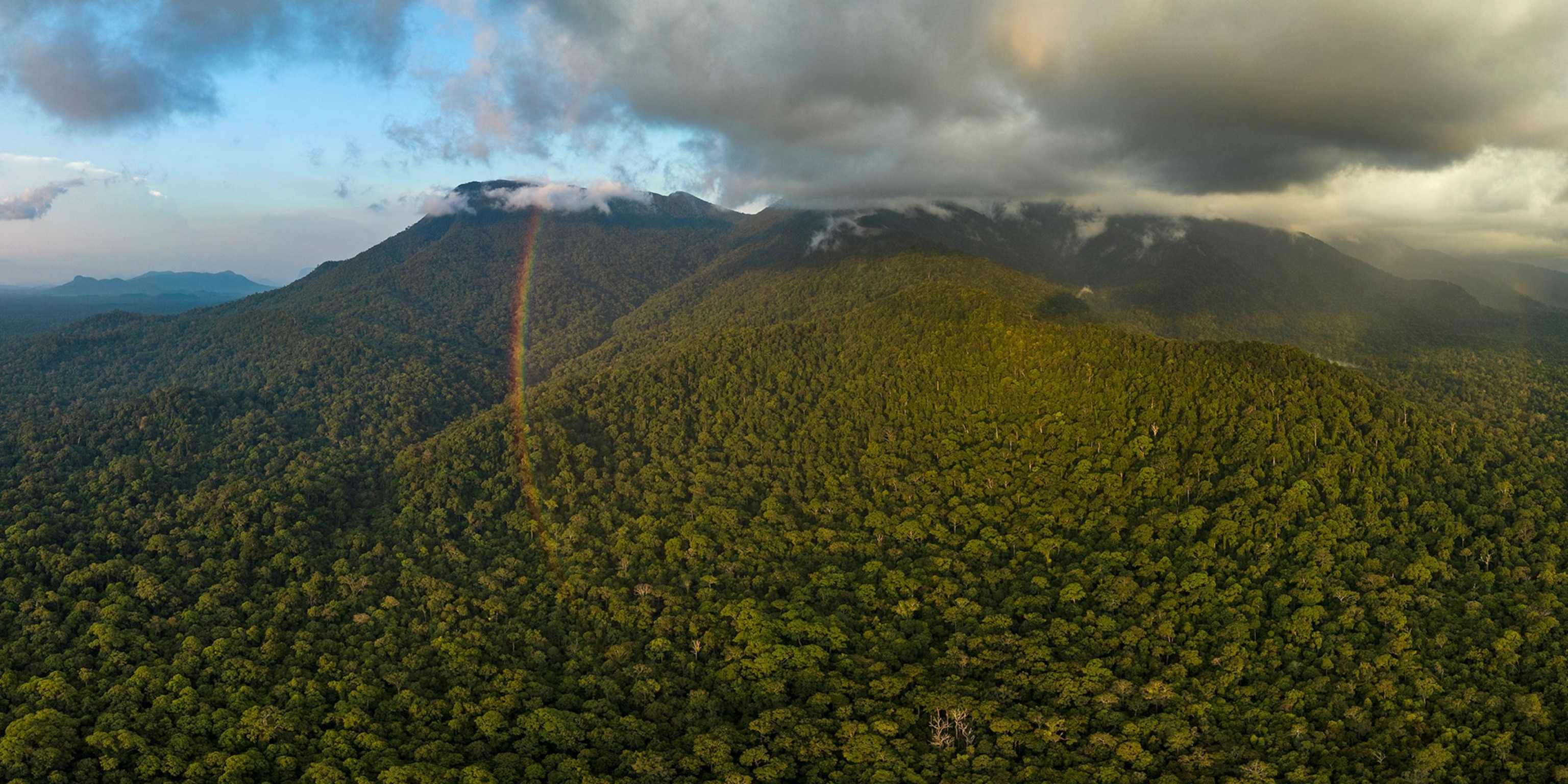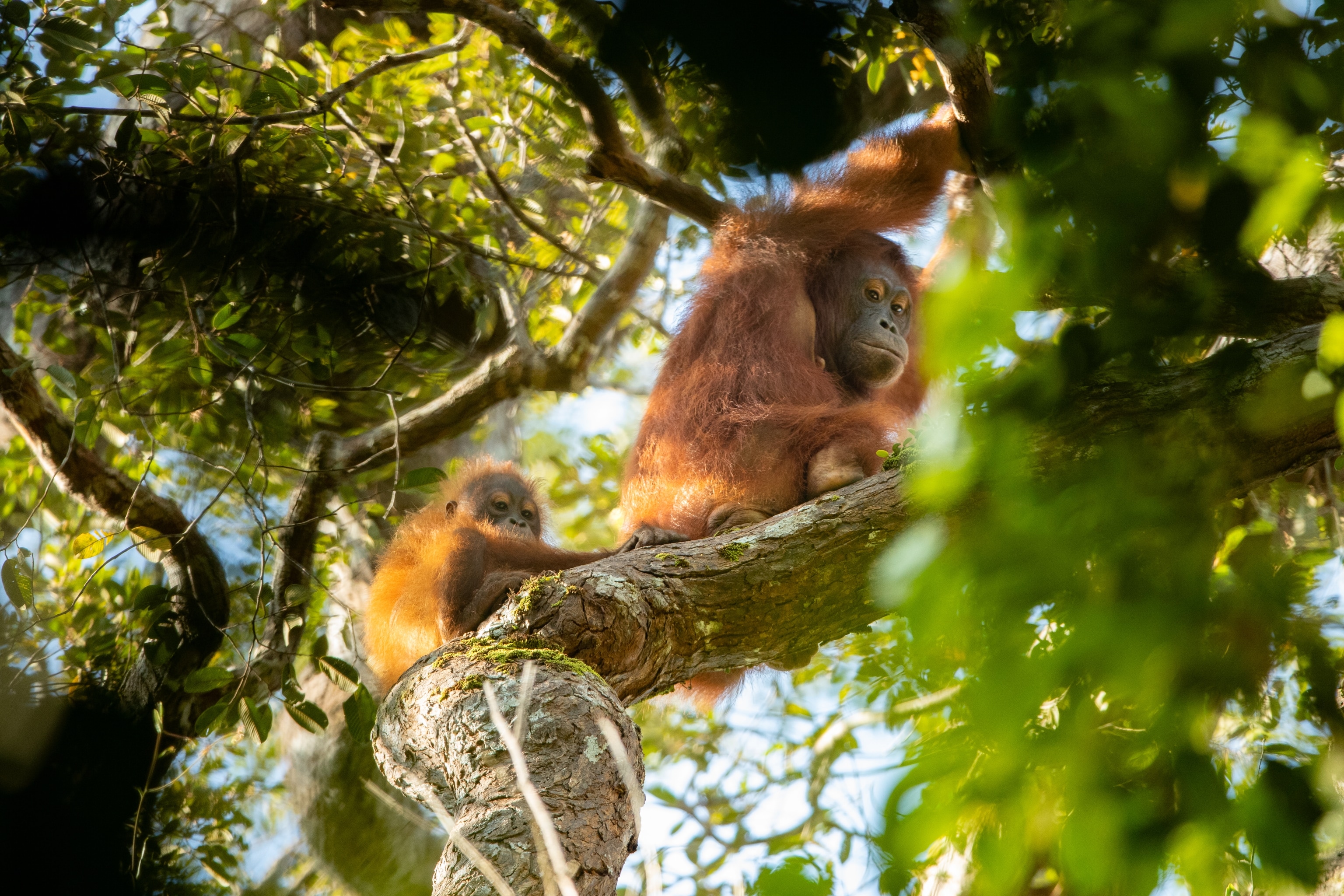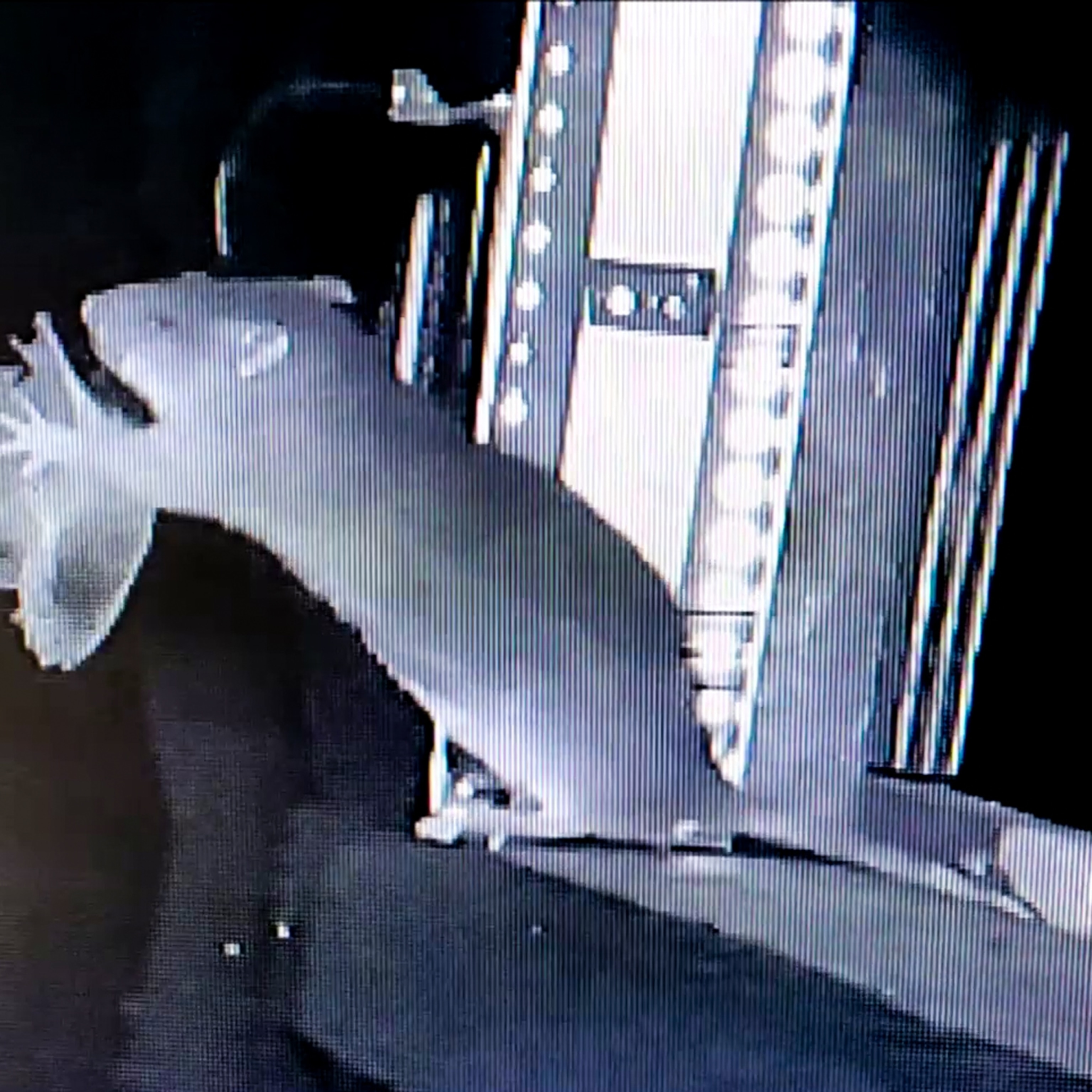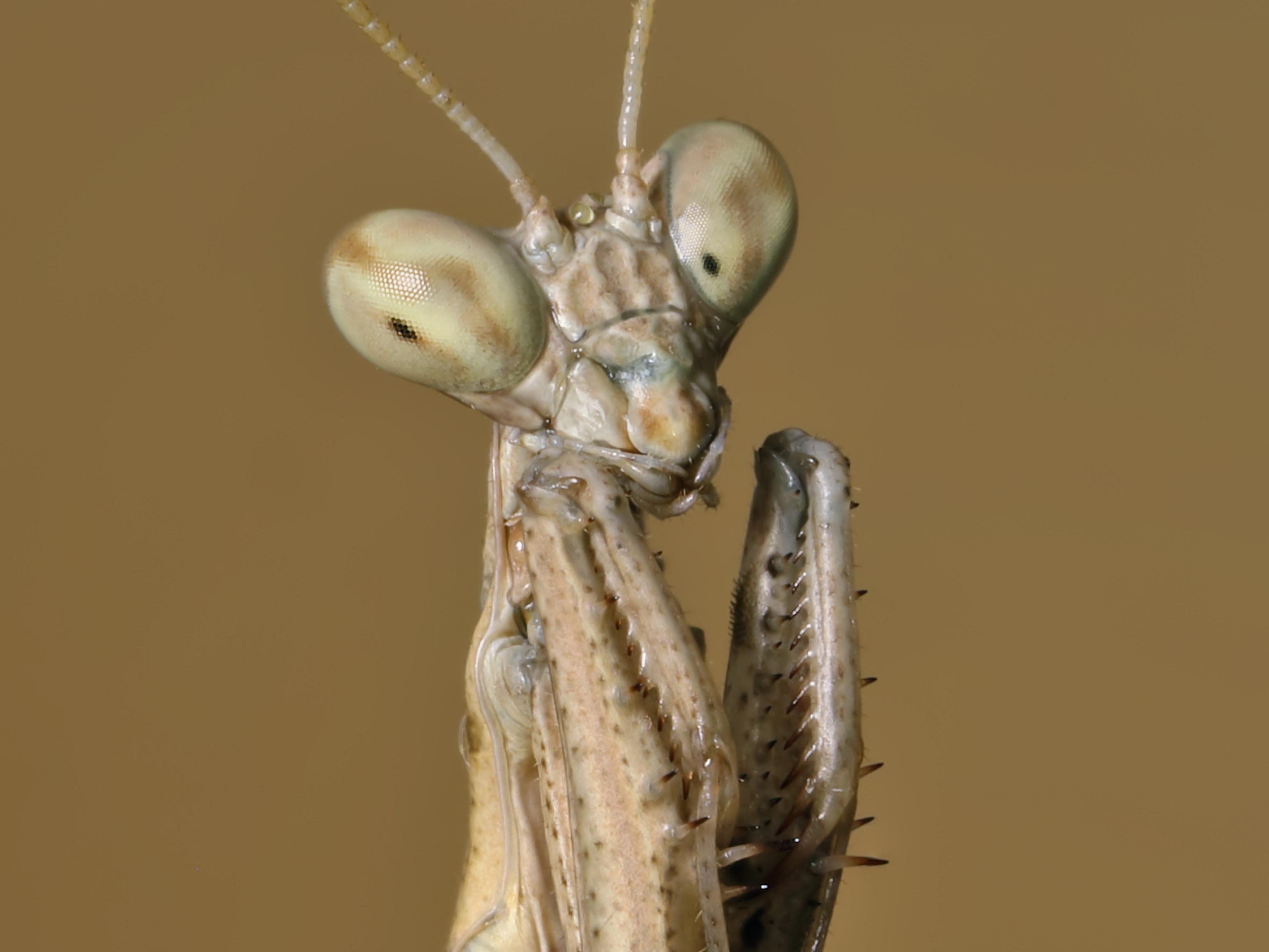Orangutan adopts little sister after their mother's death
For the first time, scientists have published a detailed report of adoption in these great apes.

At first glance, Rossa and Ronnie looked like any other orangutan mother and daughter: They traveled together by day, and slept in the same nest at night. Rossa carried Ronnie around the forest. When little Ronnie snatched a wild durian fruit out of Rossa’s hand, the older female let her eat it.
But to evolutionary biologist Amy Scott, the details didn’t quite add up. The alleged mom looked too young. When she studied the Bornean orangutans in Indonesia, she kept thinking about how Rossa was “still white around her eyes; her muzzle is still a lighter color,” Scott remembers. “How can she have this six-year-old?”
Genetic analysis revealed that Rossa and Ronnie were in fact sisters, Scott and colleagues reported recently in the journal Ethology, and the older sibling had adopted the younger one after the disappearance of their mother.
Although humans have witnessed adoptions in other great apes, it’s the first detailed report of adoption among orangutans—whose unique lifestyle might make it especially hard for an orphaned juvenile to survive.

Detective work
All great apes are highly dependent on their mothers, but orangutans take the longest to wean. Moms have been observed nursing young for as long as nine years. And these mothers are on their own: unlike chimpanzees, bonobos or gorillas, which live in groups, orangutans are largely solitary. A mother might travel with one or two children, but otherwise the animals live alone.
Tracking the movements of those loner apes requires intensive work. Even with a team of people tracking one orangutan through the trees from morning to night, it’s hard to know exactly what the animals are doing from a ground-level vantage point.
In Indonesia’s Gunung Palung National Park, where Rossa and Ronnie live, Boston University anthropologist Cheryl Knott has been leading a project to study orangutans since 1994.
“We only have a sliver of their lives that we can actually observe,” says Knott, senior author of the new study.
For her dissertation work in Knott’s group, Scott wanted to learn about paternity among the park’s orangutans. By analyzing DNA samples, she discovered that Rossa wasn’t Ronnie’s mother—she was her half-sister. Rossa and Ronnie shared a mom named Veli, who hadn’t been seen since 2016.
Veli had a daughter, Vanna, who was 4 years old when the research team last spotted the pair. Now, comparing their genetic samples, Scott realized that Vanna and Ronnie were actually the same orangutan. When Ronnie was first spotted with Rossa in 2017, the older sister must have been about 12 years old, and the younger sister would have been 5.
Scott, now at Smith College, says she felt like a detective putting the clues together. “It was really fun,” she says. “And then it made so much sense.”
At some point, Veli must have died, perhaps of old age. The two sisters reunited. And Rossa began treating Ronnie like a daughter.
“For this to be the first published account of adoption in orangutans is really exciting,” says Rachna Reddy, a biological anthropologist at the University of Utah and fellow at the Harvard Radcliffe Institute, who was not involved in the study. “Even though we’ve been studying apes in the wild for many years, there’s still so much we don’t know about them.”
In her own research in Uganda, Reddy studied four adolescent male chimpanzees who adopted their younger siblings after their mothers died. The younger chimps often looked to the older ones for reassurance, she found, and the adolescents sometimes cried when they couldn’t find their little siblings.

Growing up together
In orangutans, motherhood is “not as warm and fuzzy as you might think,” Scott says. Families don’t tend to groom each other or play together. Still, moms “are definitely taking care of their offspring,” Scott says.
The sisters roamed the forest a little farther apart, on average, than true mother-daughter pairs do. But Rossa was remarkably caring in other ways, such as sharing her food on at least one occasion.
Raising her sister didn’t seem to take a toll on Rossa. In 2019 she had a baby of her own. Ronnie began using a separate nest at night while Rossa slept with her infant, just as an older orangutan sibling would usually make space for a little one. Rossa focused on her baby but let Ronnie stick around. “She was acting like a really tolerant mom, and letting the older one hang out with them,” Knott says.
But Ronnie also grew up quickly. She reached milestones such as traveling by herself about a year earlier than other orangutans in the population. By early 2020, Ronnie had apparently left her sister and niece behind to start her own adult life.
She likely wouldn’t have survived without her big sister being there and choosing to care for her. “There’s a little bit of serendipity in it working out,” Scott says.
The multiple and mistaken identities among the Gunung Palung orangutans revealed that these apes have more ways to care for their families than humans are able to see. “What it makes me wonder,” Scott says, “is how many other times this happens that we don’t realize.”







